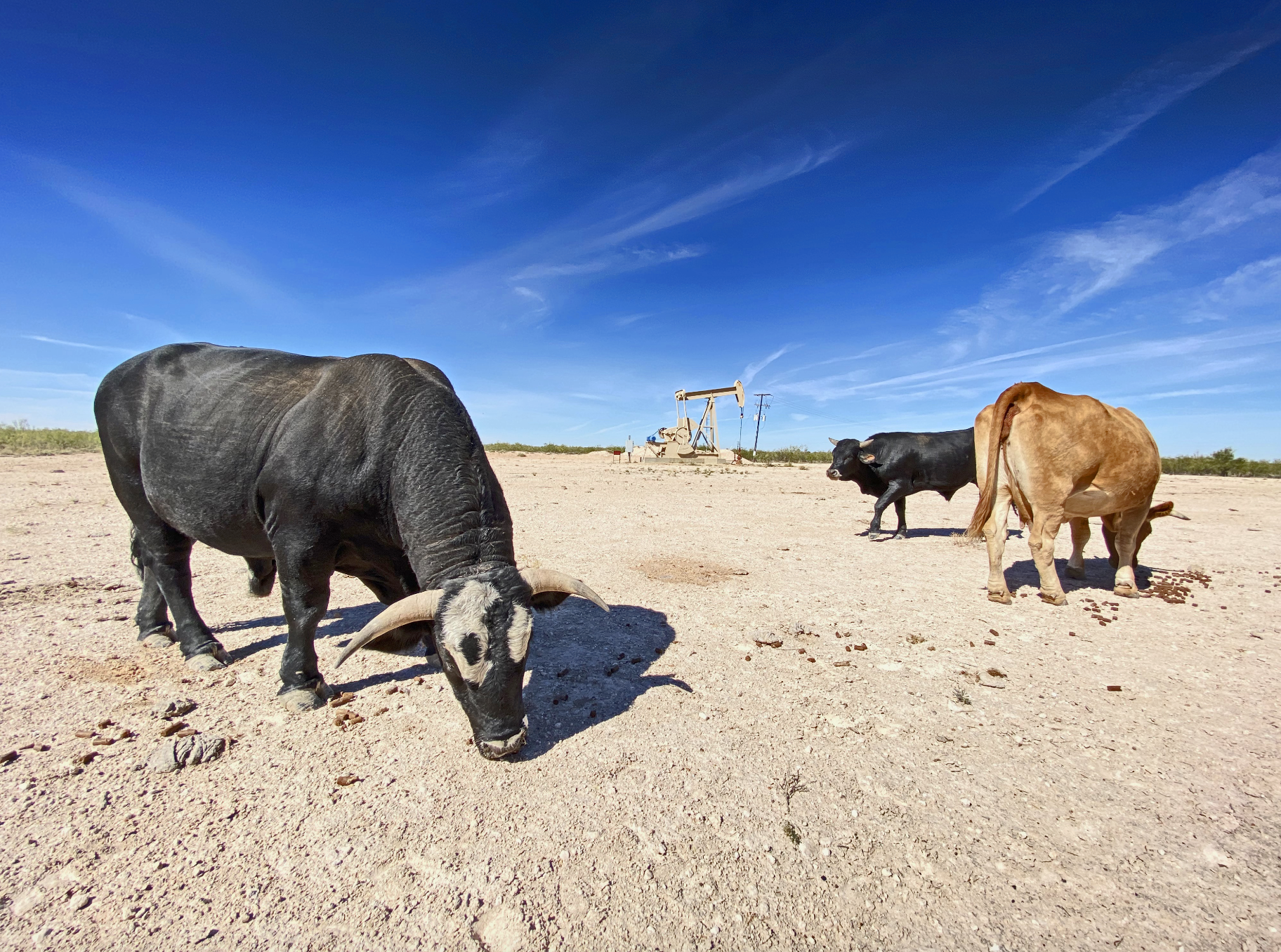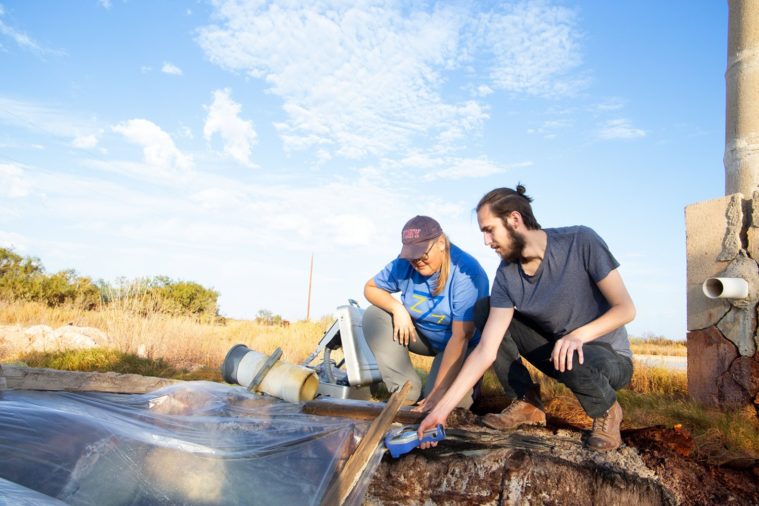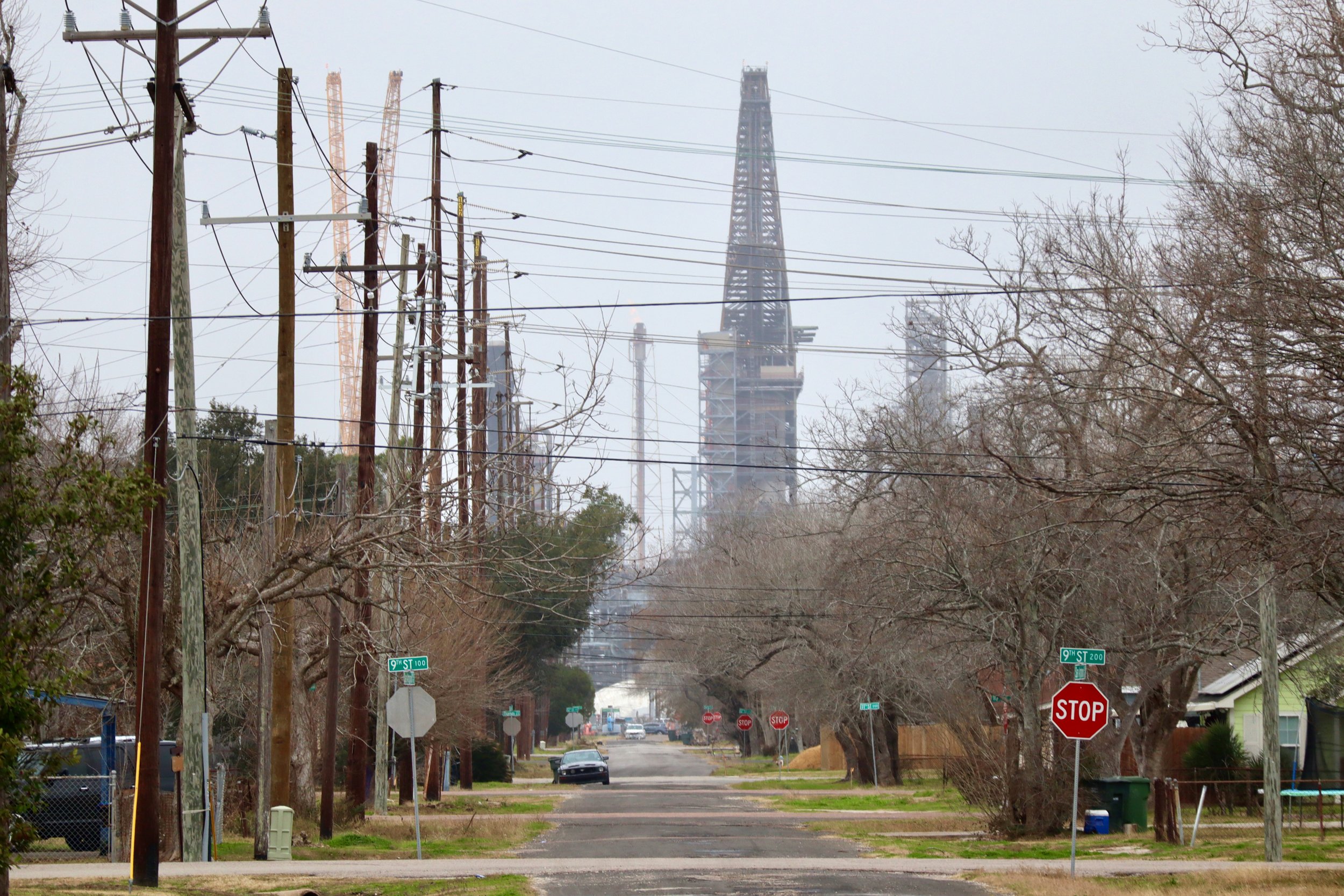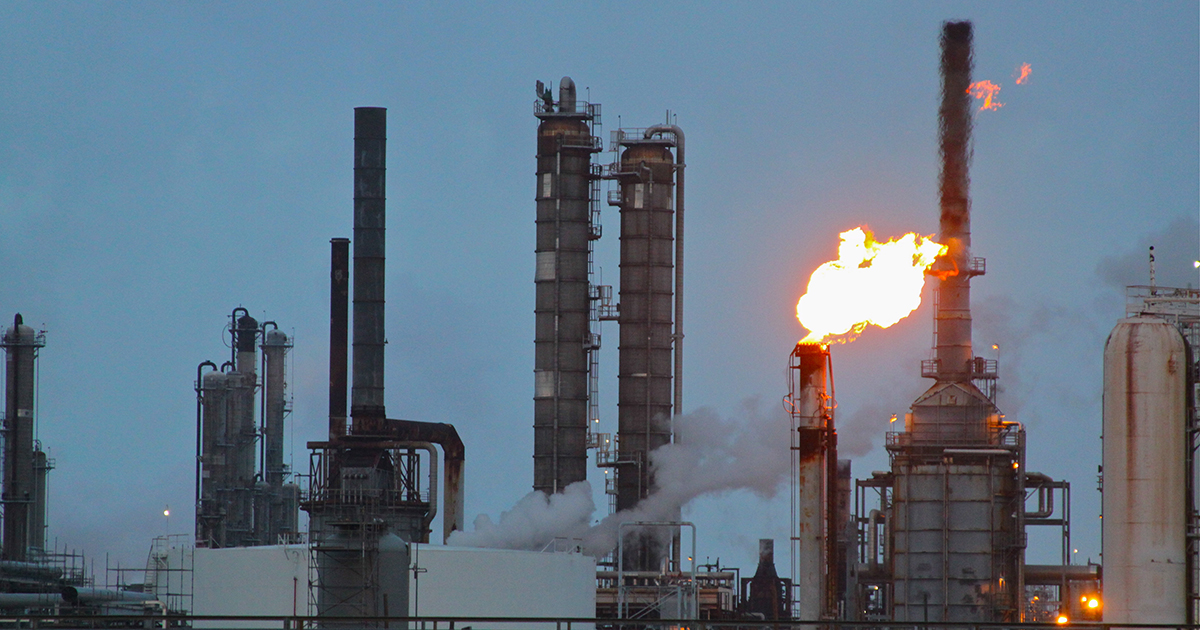
One Researcher’s Quest to Quantify the Environmental Cost of Abandoned Oil Wells
Unplugged wells could be quietly leaking millions of pounds of methane in West Texas.
Above: A herd of cows before an abandoned well on Briggs Ranch. Abandoned wells leak dangerous gases and chemicals, posing a physical risk to livestock and humans as well as the environment.
This story is one installment of a larger project by Grist and The Texas Observer. Support comes from the Pulitzer Center.
Amy Townsend-Small has been chasing methane her entire professional life. The quest has taken her from Southern California freeways to sewage plants to animal feedlots. Sniffing out the potent greenhouse gas, which traps 86 times as much heat as carbon dioxide after it’s emitted into the atmosphere, has required her to breathalyze cows and take chemical measurements at large manure lagoons. When fracking took off around 2010, Townsend-Small shifted her focus to a new and growing problem: methane leaks from oil and gas activity.
Natural gas, which is primarily composed of methane, was pitched as a fuel that could transition the U.S. to renewable energy, since it burns more cleanly than coal and is naturally abundant—and, thanks to fracking, newly inexpensive to extract. But the thinking at the time missed an important detail: The thousands of wells drilled, the millions of miles of pipeline that transported natural gas, and the refineries that processed it all leaked methane. Natural gas plants emit about half as much carbon dioxide as coal plants, but without knowing how much methane leaks when extracting and moving natural gas, the true climate effects cannot be assessed. As regulators and policymakers caught on to this fact, Townsend-Small’s work began to take on new significance.
“That sort of catalyzed a giant push for more research on methane emissions across the whole supply chain,” Townsend-Small said.

Townsend-Small began trying to quantify just how much methane was leaking from wells and pipelines. She investigated whether methane from fracking sites may have tainted groundwater in rural Ohio and collected data on pipeline and compressor station leaks in Colorado. The work of Townsend-Small and other environmental scientists tracking greenhouse gases culminated in a 2018 study finding that 2.3 percent of the natural gas extracted in the country either leaked or was directly released into the air—the equivalent of the carbon dioxide emitted by all coal plants operating at the time.
Distressingly, a small but unknown volume of those emissions come from wells that no longer produce fossil fuels at all, because the companies responsible for them have walked away from their legal obligation to seal them with cement after use. As a result, hundreds of thousands of holes in the ground are direct conduits between the atmosphere and vast reserves of fossil fuels underground, allowing them to quietly belch methane for years with no one being the wiser.
In 2016, Townsend-Small found that 40 percent of unplugged wells she tested in Colorado, Wyoming, Ohio, and Utah were emitting methane. On average, each unplugged well was leaking about 10 grams of methane each hour, contributing the annual carbon equivalent of burning more than 2,400 pounds of coal. The EPA used her research to estimate that the nation’s approximately 3.1 million abandoned wells were spewing greenhouse gas emissions equivalent to burning more than 16 million barrels of oil.
Such attempts to quantify methane emissions nationally come with fairly large margins of error, primarily because research on this front is scarce and what does exist is based on surveys in the Appalachian Basin. No two geological formations are the same, so without more detailed data from major oil- and gas-producing states, it’s impossible to say precisely the damage that abandoned wells may be doing to the planet. That’s why Townsend-Small recently set out to fill a Texas-sized hole in the research: The Lone Star State is the largest producer of oil and gas in the country and has thousands of abandoned wells, but its methane emissions have never been systematically measured.
Last year, after Grist and the Texas Observer introduced Townsend-Small and a research assistant to West Texas landowners with inactive wells on their properties, the researchers used a federal grant to conduct what they believe is the first-ever academic study of methane emissions from abandoned wells in Texas. Their findings, which have been accepted for publication in the scientific journal Environmental Research Letters, suggest Texas’ inactive wells could be emitting enough methane to power more than 15,000 homes for a year. Their findings provide more granular data for the EPA and state regulators to rely on when assessing the oil and gas industry’s contribution to climate change.
To conduct her research, Townsend-Small drove down to Pecos County, Texas, from Ohio, where she is now an assistant professor at the University of Cincinnati, and spent three days surveying 40 wells, nearly half of which were actively leaking methane. Most of the sites, which are connected by thin dirt pathways just wide enough for a truck to pass through, are rough-cut openings in dense mesquite. There, Townsend-Small and her assistant knelt in the sand to set up their equipment: a computerized instrument housed inside a briefcase that’s attached to a vacuum hose. The hose is secured to a section of the oil well that’s open to the atmosphere, and the computer tells the researchers how much methane the sampled air contains. They collected specimens by using a syringe and plunging it into a glass vial. Sometimes they had to use strips of plastic and elastic bands to trap enough wellhead gas to measure.
Of the 17 wells where methane leaks were detected, the emission rates ranged from 0.2 to 132 grams an hour. Just three wells at the high end of that range were responsible for 94 percent of all emissions. The phenomenon—in which a handful of especially leaky wells that Townsend-Small and other researchers call “super emitters” are responsible for the vast majority of emissions—is a pattern that’s also been observed in the Appalachian Basin and other oil fields in the country.
“If you want to make a big impact, you only have to fix the big leakers,” Townsend-Small told Grist and the Texas Observer.
If Texas’ roughly 102,000 inactive and abandoned wells leak at a rate similar to the wells Townsend-Small sampled, they could be emitting more than 5.5 million kilograms of methane into the atmosphere each year. That’s the equivalent of burning more than 150 million pounds of coal.
A subset of the wells examined by Townsend-Small’s research are so-called shut-in wells, which are not technically abandoned because their operators claim they may someday revive them, but nevertheless often lie idle for several years when oil prices are low. Of the 26 shut-in wells surveyed, 12 were emitting methane. All three “super emitter” wells were shut-in. Last year, as a global decline in demand sent oil prices plummeting, a large number of legacy wells were idled.
“There’s a record number of shut-in wells in the United States right now, especially these older conventional wells, which were already producing a very small amount,”Townsend-Small said.
She said that more research is required to understand the volume of particularly toxic chemicals, like benzene and toluene, that may be leaking from abandoned and idled wells alongside methane. Research has demonstrated that living near active oil and gas sites leads to adverse health outcomes, including a higher risk of cancer, increased odds of underweight newborns, and a higher likelihood of preterm birth. But whether those trends hold true for those living near abandoned wells is an open question. A 2020 study by a group of University of California, Berkeley, researchers found that women who lived close to inactive wells were more likely to give birth to underweight and preterm babies. Their findings are inconclusive, but they hypothesized that a slew of toxic chemicals that are often released in tandem with methane may be driving the health effects. (Editor’s note: One of the paper’s co-authors is Rachel Morello-Frosch, who is a member of Grist’s board.)
At some of the well sites Townsend-Small visited, the stench of hydrogen sulfide, a gas that is deadly to humans in large quantities, hung heavy in the air. She described being overwhelmed by the smell during at least six well site visits. Those wells were leaking methane as well as releasing chemical-laden water. After those visits, Townsend-Small and her assistant felt nauseous for several hours, waking up multiple times in the night. The wells are just a few miles away from Buena Vista High School as well as the Pecos River, a source of irrigation water in the area.
“That needs to be investigated further,” she said.


